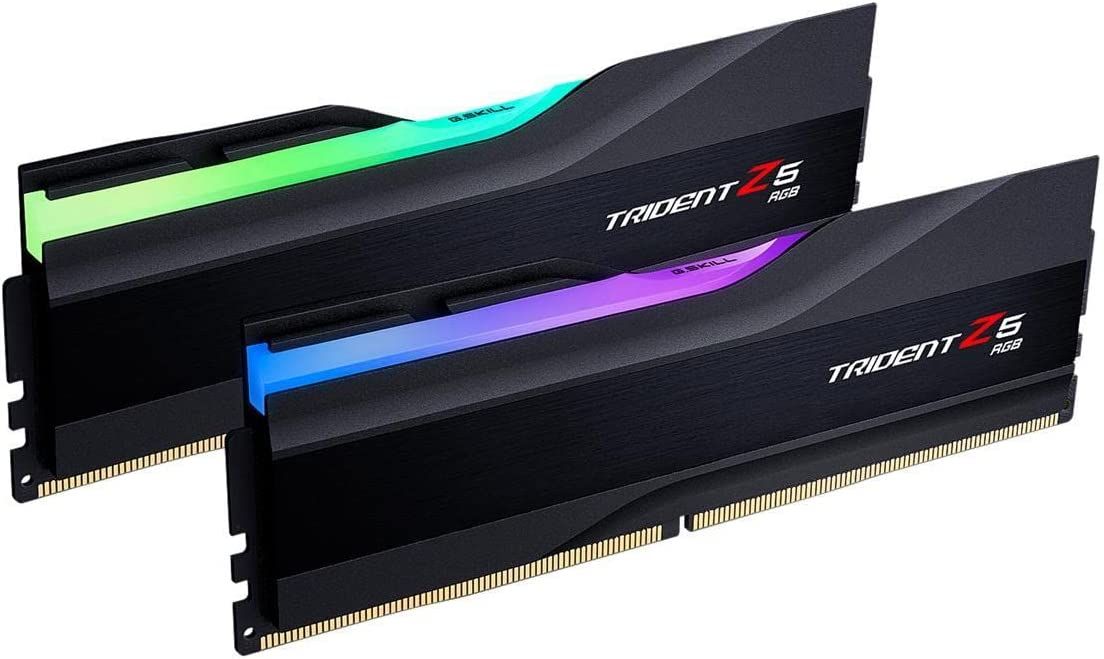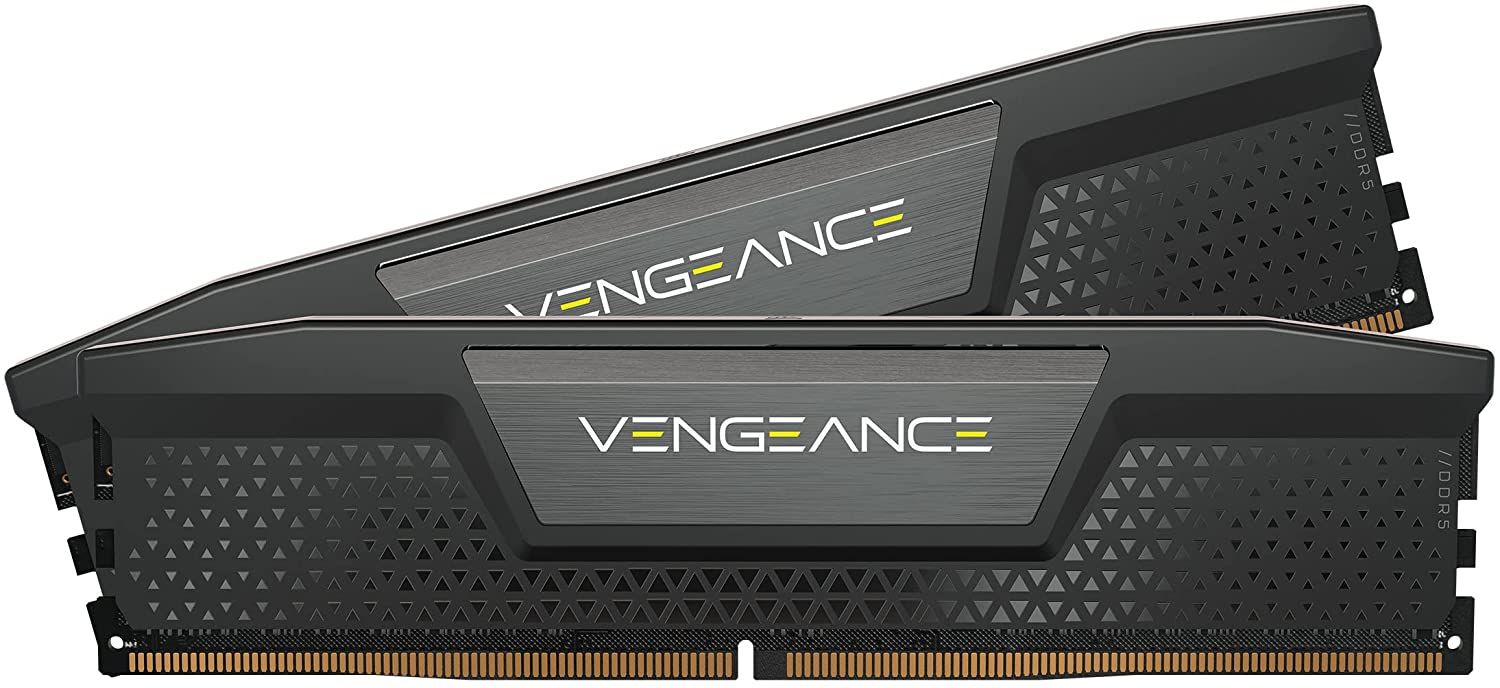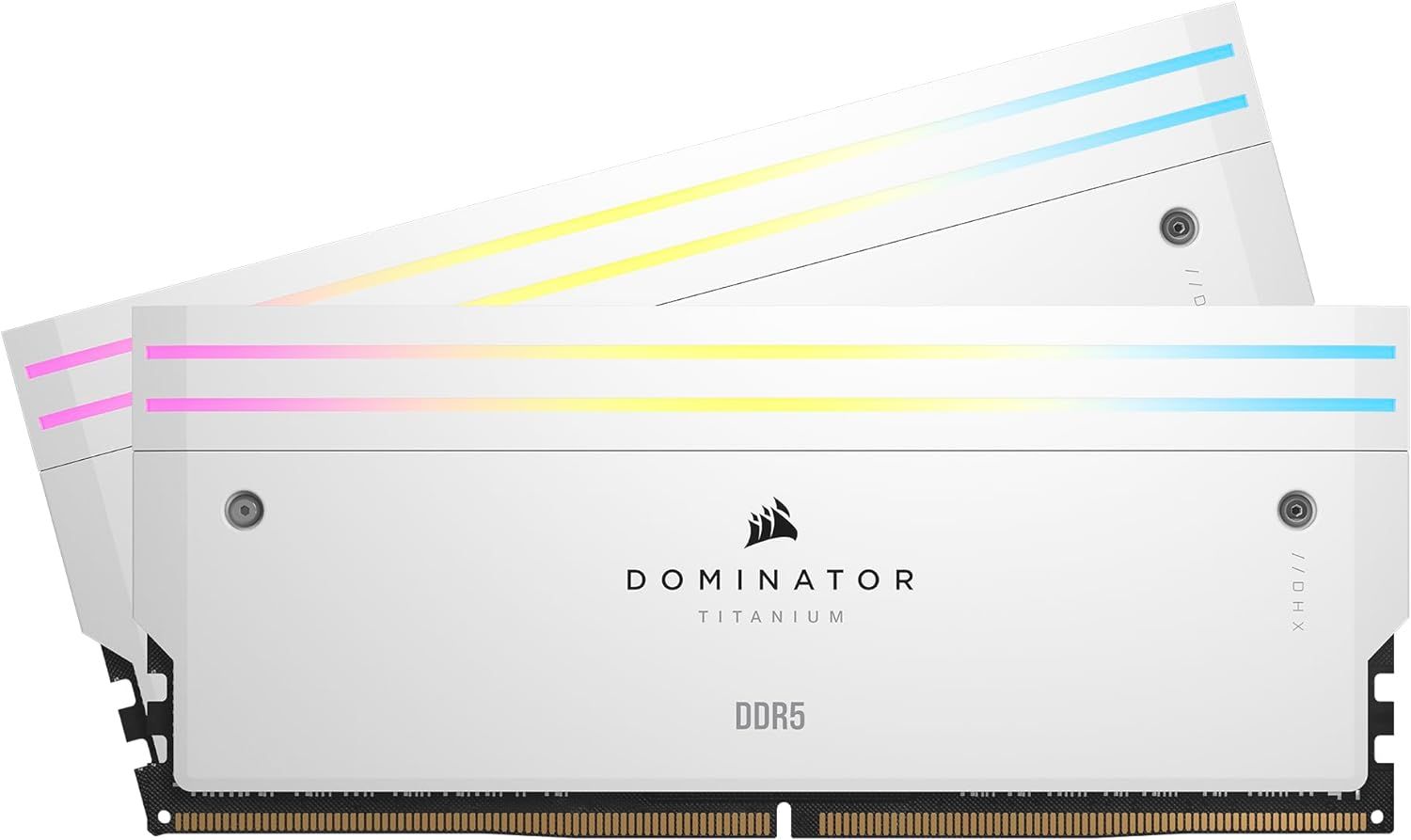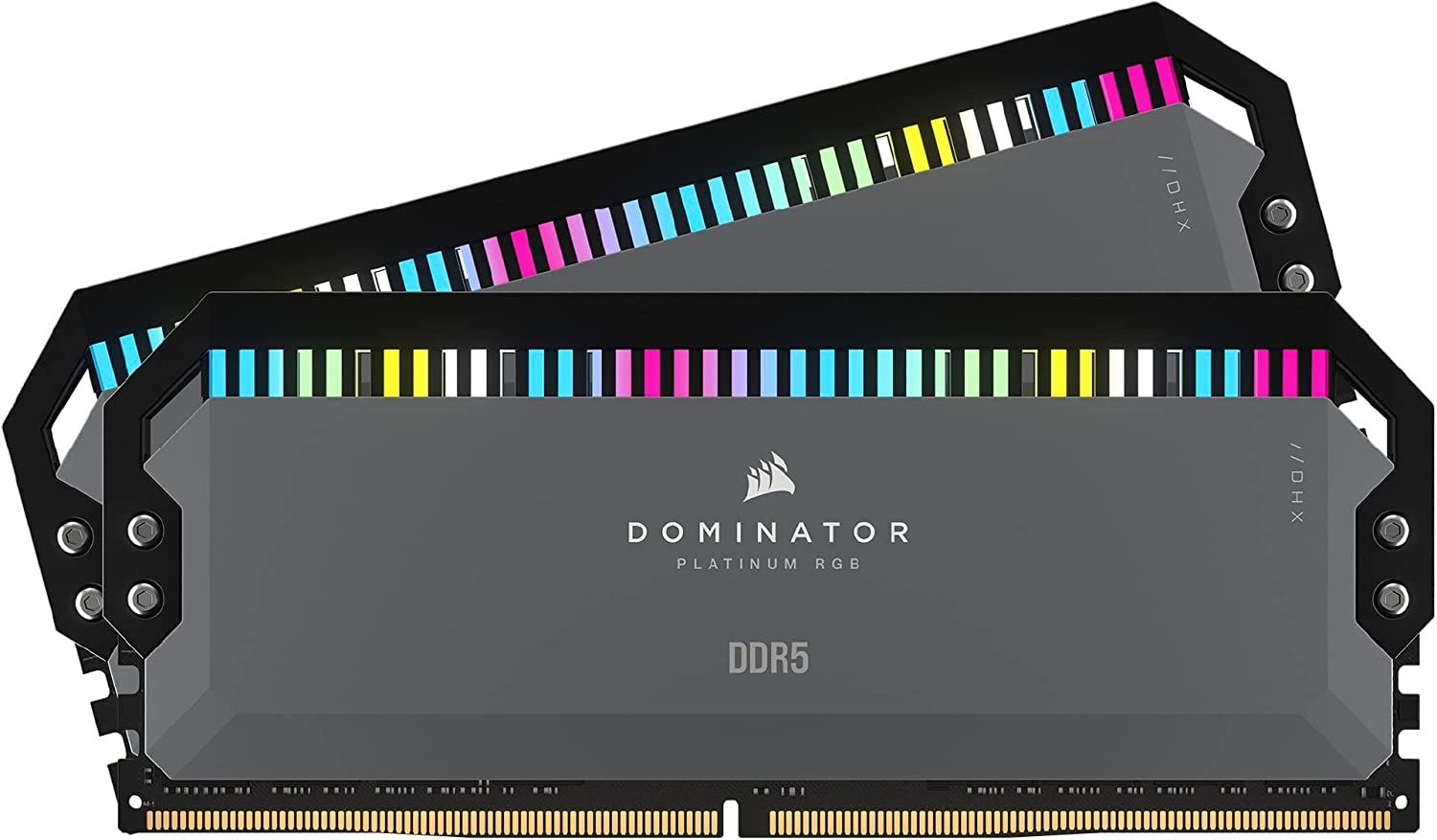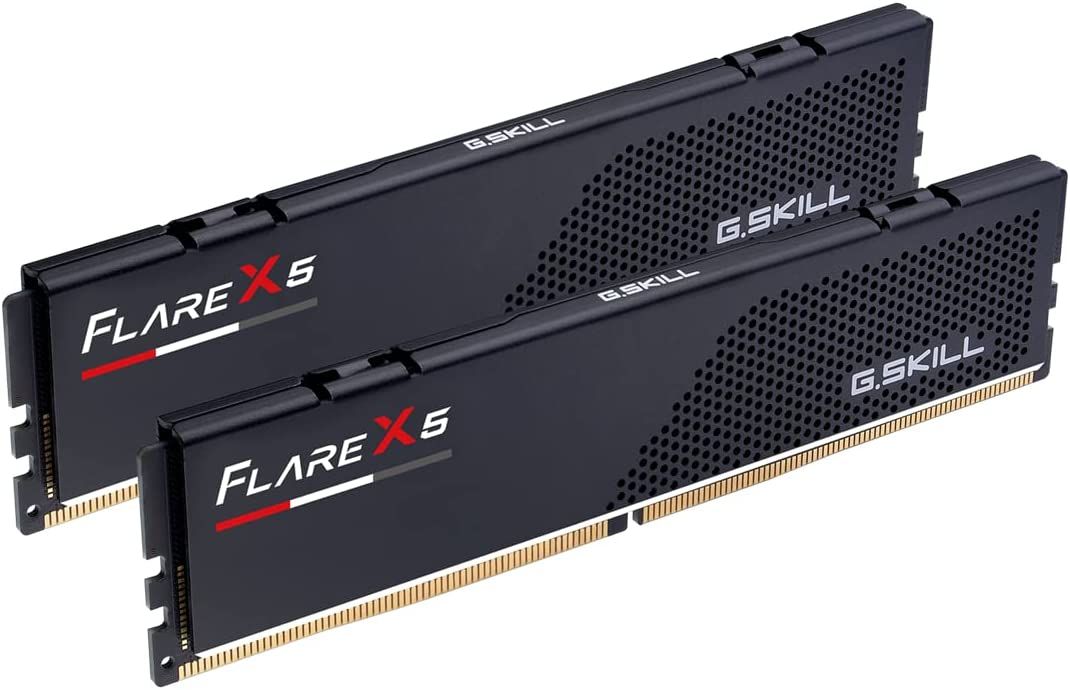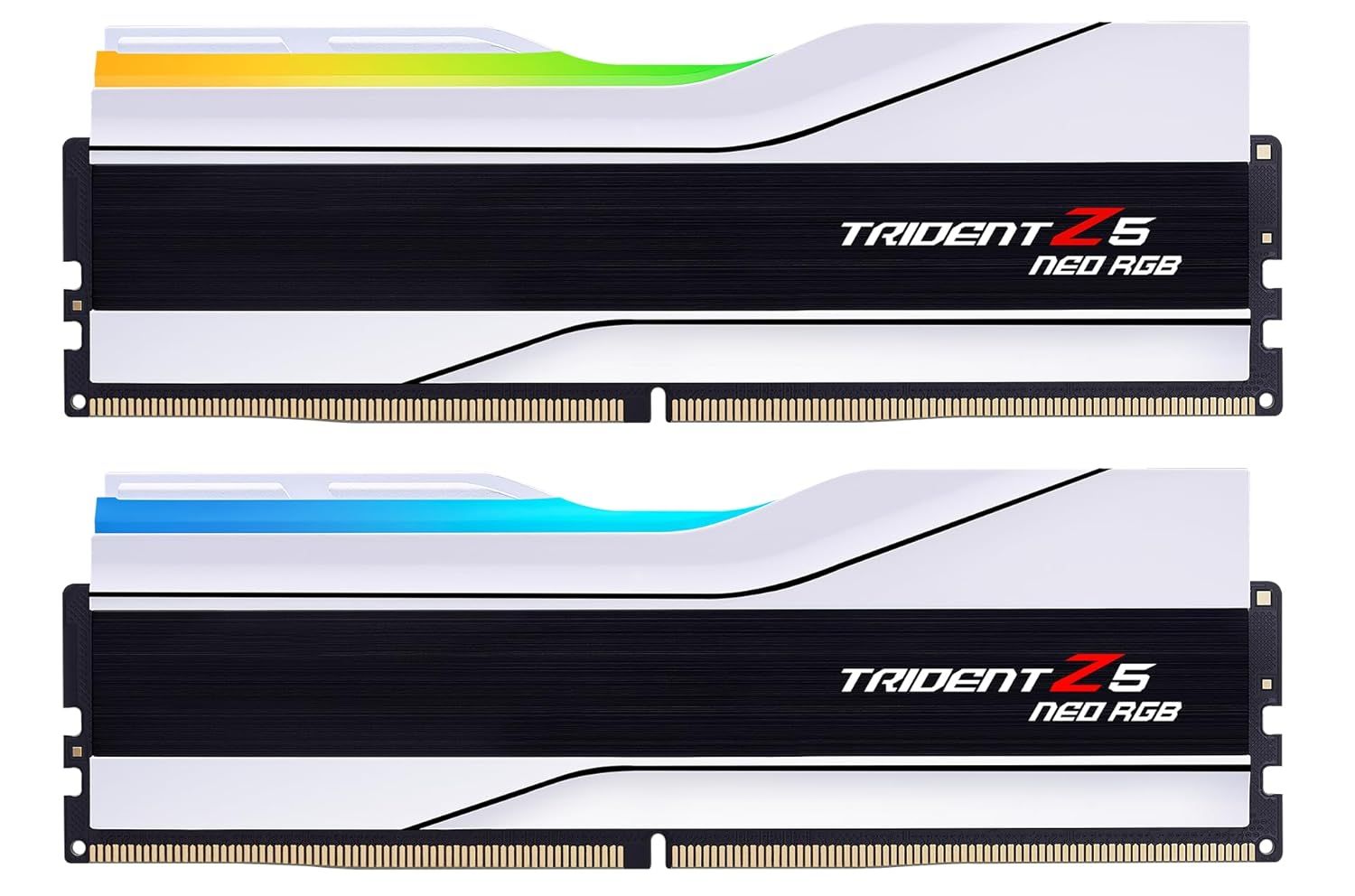As DDR5 continues to cement its position as the de facto memory standard, gamers and productivity professionals alike are looking to find the best memory for the blend of performance, value, and aesthetic that fits their needs. DDR5 RAM starts as low as 4000MHz or MT/s and goes up to as much as 8300 MHz (or higher if overclocked) on default XMP profiles for some extremely overclocked DDR5 memory sticks.

The Best Gaming RAM For PCs In 2024
Need more memory for your gaming desktop? Here are our picks for the best you can buy right now!
AMD's EXPO or Intel's XMP: Which Is Better?
The biggest confusion most gamers encounter is when they come across XMP and EXPO monikers attached to RAM modules. Given that until recently only XMP and ASUS's DOCP (for AMD CPUs) profiles were well known, it is understandably confusing. AMD has made things easier by offering its own alternative to Intel's Xtreme Memory Profile (XMP) memory overclock profiles.
AMD's EXPO (short for Extended Profiles for Overclocking) is AMD's new terminology for the profiles it assigns to memory modules that run optimized for its hardware at specific memory timings and clocks. This allows AMD to offer both better voltage control than current-generation XMP profiles and offer custom profiles based on what it determines are the needs of its processors.
For end-users, much of this does not matter, but it always helps to pair EXPO-supporting DDR5 memory for AMD CPUs to benefit from better compatibility and stability when running said memory at its rated speeds on the box. Likewise, using Intel's XMP profiles helps smooth things over for gamers looking to maximize performance with its processors by supporting DDR4 and DDR5 RAM modules.
TLDR: Both are similar or equivalent standards, but AMD's option is slightly better for its processors and chipsets due to its platform-specific optimizations.
XMP is available on both DDR4 and DDR5 modules for Intel CPUs, while AMD's solution for DDR4 is ASUS's DOCP and DDR5 is EXPO. DOCP essentially piggybacks on the XMP standard, while EXPO is more specific to AMD's needs.
Getting The Right DDR5 RAM
Finding the right memory is crucial for users, as they need to be able to handle nearly all of their system's needs. Decent memory can also allow a newer CPU to max out its potential while offering significant productivity and gaming gains for users. Ideally, one should aim for high-clocked RAM that meets both AMD and Intel's minimum specs for their platforms.
Even better is to aim for their high-end performance capabilities while keeping RAM latency as tight as possible. This allows for faster read and write memory access, which could accelerate multiple processes that current-generation PCs maintain in order to deliver consistent performance to end users.
Choosing The Best DDR5 RAM Modules
Choosing the right memory for one's needs can be a bit challenging for users, especially given the plethora of capacities, clock speeds, price tags, and designs that DDR5 memory comes in. Picking the right RAM modules, however, boils down to some simple rules:
Latency: As modern processors become faster and more core-heavy, CAS latency is a key metric for determining how fast memory truly is by measuring the delay between a request for data and when it is fulfilled. Low-latency memory is nearly always faster than cheaper, high-latency alternatives that often make up most of the budget offerings. This is particularly true for certain processor architectures where it directly affects the CPU's performance significantly.
Clock Speeds: Clock speeds matter, as they directly relate to the amount of data that can be transmitted or processed by a PC per unit of time spent. Therefore, users aim for higher clocks to eke out more performance than the default DDR5 memory clocks that would otherwise be in play, though this does have diminishing returns. That means that finding a sweet spot in terms of speed is essential for gamers and enthusiasts. At the same time, the choice should be cost-effective, have a supported clock speed, and be stable during use.
Profile: Most modern gaming-centric DDR5 RAM kits often have extended heat spreaders as part of their design. This can be a problem for users with specific builds, such as small cases and large AIOs. They often clash with the top side of the AIO, making it a tight install that often involves removing multiple screws to get to the RAM or reseat it. Users might benefit from considering low-profile memory instead. This allows them to have more space between the RAM and other PC components, such as large air coolers and AIOs.
The team at Game ZXC has picked some of the best DDR5 RAM, prioritizing value for money, clock speeds, and latency in that order.
Game ZXC's Picks for the Best DDR5 RAM for Gaming PCs in 2024
G.Skill has historically been one of the best brands in the market when it comes to DDR4 memory. It continues to lead the industry when it comes to DDR5 memory generally, with its RAM modules being industry favorites. That's for good reason as they have superb warranty terms, great build quality, and excellent aesthetics across the board, making them a favorite for returning PC builders as well as enthusiasts alike.
However, not all of their DDR5 RAM is made equal. Some of their memory models have higher latency than others at the same clocks. G.Skill looks to pass on pricing benefits to consumers by using cheaper, entry-level memory in some of its products. Enter the G.Skill Trident Z5 RGB Series. It comes with lower latency than most of G.Skill's other offerings while offering excellent overclock potential, making it a formidable choice for users looking to use high-clock DDR5 memory at default XMP settings or tweaking their own.
At CL32 latencies at a 6400MHz clock, the G.Skill Trident Z5 RGB Kit is miles ahead of the competition in general. It's an excellent pair of RAM modules to couple with a 12th, 13th, or 14th-generation motherboard and processor.
If users need a no-nonsense DDR5 RAM kit that performs as per specification and works well with both Intel's current and penultimate offerings, look no further than the CORSAIR Vengeance DDR5 16G x 2 Kit (CL36). It clocks at 5600MHz and trades at the lowest price available at both Amazon and Newegg.

The Best DDR4 RAM for Gaming in 2024
Here are some of the best DDR4 memory kits one can get for their gaming PC in 2023
Sporting CL36 clocks, it doesn't feature the tightest timings when it comes to gaming memory, but it doesn't need to either because of its budget proposition. Corsair allows enthusiasts to test and program its memory with custom XMP profiles via its iCUE app, which makes things easier for users looking for a more permanent solution for their own tweaked settings for their DDR5 memory. If one is looking for an RGB-enabled kit, Corsair still has them covered with a well-priced Vengeance RGB kit that shares the same features at a slightly higher XMP clock speed for the added premium.
Corsair's dominance in the RAM market is still visible due to the availability of a variety of RAM kits at different prices. Dominator being the flagship series, always keeps ahead and brings gorgeous aesthetics and very high clock speeds. The Dominator Titanium kit is fairly new with a 2x 24GB configuration which is now supported on the majority of Intel DDR5 compatible motherboards. One of the reasons why it is the best choice for PC builders is its stability.
Reaching high clock speeds is not an easy task, particularly when users want tight timings and stability for a longer period. The Dominator Titanium does exactly that and can sustain 7200MT/s speed out of the box. It may require a BIOS upgrade on the motherboard to reach its stock speeds, but it is not limited to 7200MT/s. With proper voltage and CL timings adjustments, the memory kit can reach over 7200MT/s. Newbie overclockers can also adjust the RAM speed pretty easily with a single setting and can save it permanently.
The RAM modules look pretty dope with those aluminum heatsinks that have RGB LEDs embedded. The colors and lighting effects can be adjusted easily using the popular Corsair iCUE software that can control multiple Corsair RGB peripherals and components at the same time. It's definitely a top-of-the-line DDR5 RAM kit but comes at a hefty cost that may not fit every user's budget.
The Corsair Dominator Platinum RGB DDR5 32GB 6000MHz kits are an excellent mix of performance, aesthetic, and customizability. They hit AMD's purported sweet spot, making the EXPO-supporting memory a no-brainer for AMD fans to consider as part of their new gaming PC build wishlist, particularly for higher-end chips like Ryzen 7800X3D.
Featuring 12 Ultra-Bright CAPELLIX ARGB LEDs on each module, the Dominators are easily some of the best-looking gaming RAM offerings on the market. They also conform to AMD's own EXPO profiles that aim to allow its AMD processors to perform better thanks to higher clocks, much like Intel's own XMP standard that AMD adapted to the last generation. At the same time, they can be reprogrammed with their own custom EXPO memory profiles via Windows, which allows enthusiasts to have an easier time than most motherboard BIOS settings when it comes to setting up their DDR5 RAM for custom, better-than-stock profiles.

The Best Motherboards To Pair With The AMD Ryzen 7 7800X3D
Here are some of the best motherboards to consider pairing with the AMD Ryzen 7 7800X3D.
The Corsair Dominator Platinum RGB DDR5 memory is not a cheap kit. It is priced quite high compared to the competition, but it does have its own consumer base thanks to its looks and excellent build quality, coupled with acceptable performance with AMD's latest and greatest processors on offer.
The hunt for the best DDR5 memory on a budget for a current-generation AMD processor is a tricky affair. This is primarily because most EXPO memory is making the rounds in a buyer's market for DDR5 as prices have been reduced quite dynamically thanks to a supply glut from manufacturers pushing DRAM prices considerably lower than their historic averages in the last few months.
The G.Skill Flare X5 Series 6000MHz 32GB CL36 is our pick for the best DDR5 RAM we can buy on a budget for AMD's Ryzen 7000 series processors without breaking the bank. It matches AMD's purported sweet spot of 6000 MHz for Zen 4 CPUs while clocking in at a very respectable CL36 timing while doing so.
The price is one of the best one can get for a 32Gb DDR5 RAM module kit. While it skips on RGB lighting, it still looks fairly impressive thanks to its minimalist design that offers a reasonably premium look for one of the best value-centric DDR5 RAM modules on offer. Newegg currently also offers an excellent $11 coupon to make the Flare X5 the cheapest they have ever been for gamers looking for excellent no-nonsense RAMs that also offer lower latency than their peers.
Unlike Intel XMP DDR5 memories, AMD EXPO-compatible kits can't reach very high frequencies. Still, with a decent clock speed like 6400 MT/s, users can expect a noticeable performance bump compared to 5600 or 6000 MT/s memory kits. This is why the G.Skill Trident Z5 Neo RGB series kit is a wonderful option for users looking to leave no room for compromises. G.Skill's Z5 Neo F5 model has been pretty successful in providing good stability at its maximum clock speed of 6400 MT/s with EXPO enabled.

The Best Budget AMD Gaming CPUs In 2024
AMD's Ryzen 7000 Series is taking performance awards consistently, but here are some of the best budget options.
It's recommended to use a good X670 motherboard to ensure that the kit can maintain its stability without having to compromise on its great timing of 32-39-39-102. Motherboards like ROG Strix X670E-F or higher offer the best choice for pairing up with this RAM kit. Apart from its excellent performance, the RAM modules are aesthetically compelling as well. With beautiful customizable RGB lighting on top of the brushed aluminum heat-spreaders, it will illuminate the rig from the inside.
Why Should Users Go For DDR5 Memory?
DDR5 or Double Data Rate 5 memory is the latest iteration of desktop and laptop-based memory. It is supported by all current-gen platforms, including AMD's X600/B600 series and Intel's Z600 and Z700 series motherboard chipsets. It is the de facto standard and will see multiple upgrades down the line in addition to higher capacities, clocks, and lower latency as platforms and modules mature over time.
For players building a new PC, DDR5 memory absolutely makes a lot more sense today than it did a year ago. It is considerably cheaper, will be the standard for years to come, and is much more stable for gaming, thanks to multiple bios updates on supporting platforms. Given the low price of entry relative to its launch, easier upgrades down the line, and some performance gains, this is a no-brainer for users.
What Should Users Look For In DDR5 Memory?
DDR5 memory is relatively new as it looks to double clock speeds for memory offerings while consuming less power than the previous generation DDR4. However, memory technology has not made advances that can justify essentially doubling the clocks without leeway on the latency front.
As a result, while DDR5 memory is much faster on paper, the gains are somewhat limited for gaming uses with much higher latency. DDR5 memory generally sees latency that is twice as much as some of the top-end DDR4 memory modules in a tradeoff that also brings lower voltages, more stability, and efficiency into the mix.
As a result, not all DDR5 memory is made equal. Entry-level units come with lower clocks and sometimes higher latency, with the latency pushing higher as they move up their clock speeds, which does impede performance somewhat on CPUs that often rely on a mix of high clocks and low latency to work efficiently.
Ideally, users would want a pair of DDR5 memory that achieves at least 5600MHz for Intel's 13th gen processors and 6000MHz (AMD's suggested sweet spot for its 7000 series) with a respectable latency (CL36 or lower, preferably). While DDR5 memory is pushing higher in terms of clock speeds, as even 8200 MHz modules enter the market, the gains tend to plateau for all but the most specific gaming scenarios, making the guidance above relevant to users' choices when it comes to DDR5.
FAQ
Q: What DDR5 RAM or memory should I get for AMD Ryzen 7950X or 7950X3D?
Any AMD EXPO-certified memory would work well with AMD's latest 16-core processors. This is because they run at an AMD-approved spec for overclocking that allows their processors to work optimally. The sweet spot for AMD processors is currently 6000MHz with the X3D versions of their processors being a little more lenient in terms of requirements when it comes to RAM.
Q: Is RGB in RAM Important For Performance?
No, RGB in RAM does not give any performance bonuses or boosts. Some RGB RAM however might perform better than standard RAM simply because of what audience it caters to; RGB RAM kits tend to be a little higher-end and gaming-oriented, making them a somewhat superior choice at times but the lighting itself does nothing for performance or capacity needs for the end-user.
It does however look aesthetically pleasing (depending on user needs and tastes) and generally comes in ARGB flavors, allowing users to customize their RAM to a color code of their choosing.


